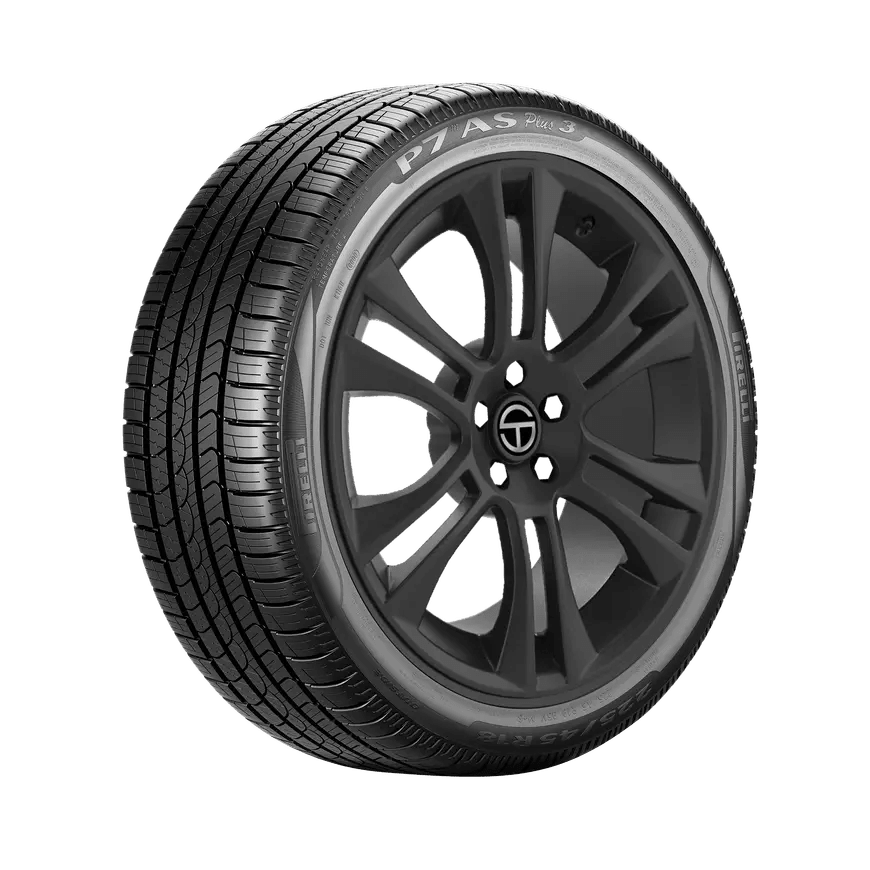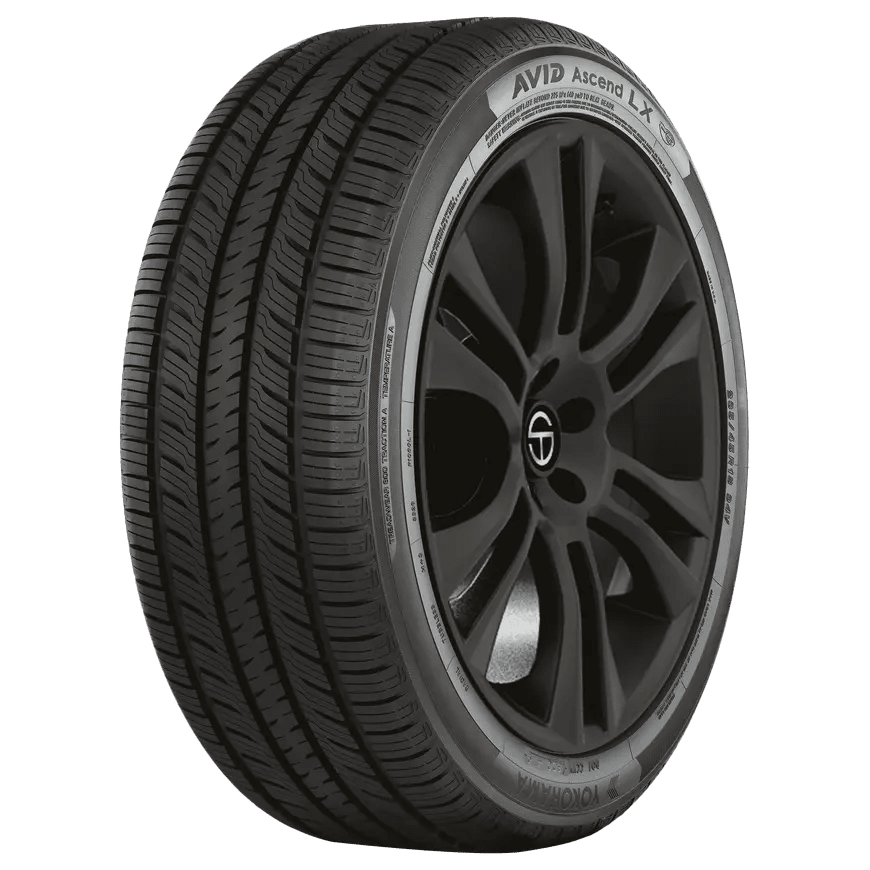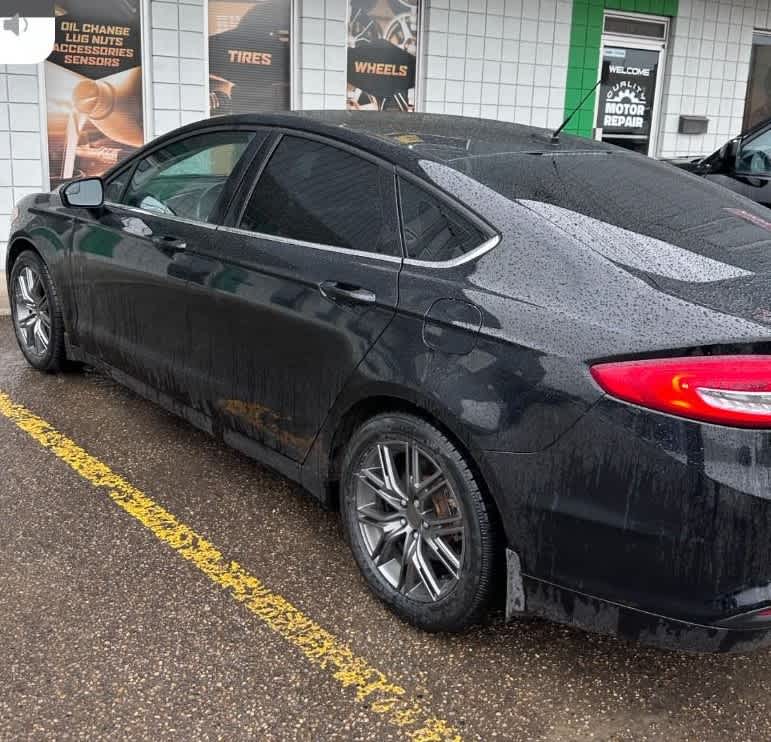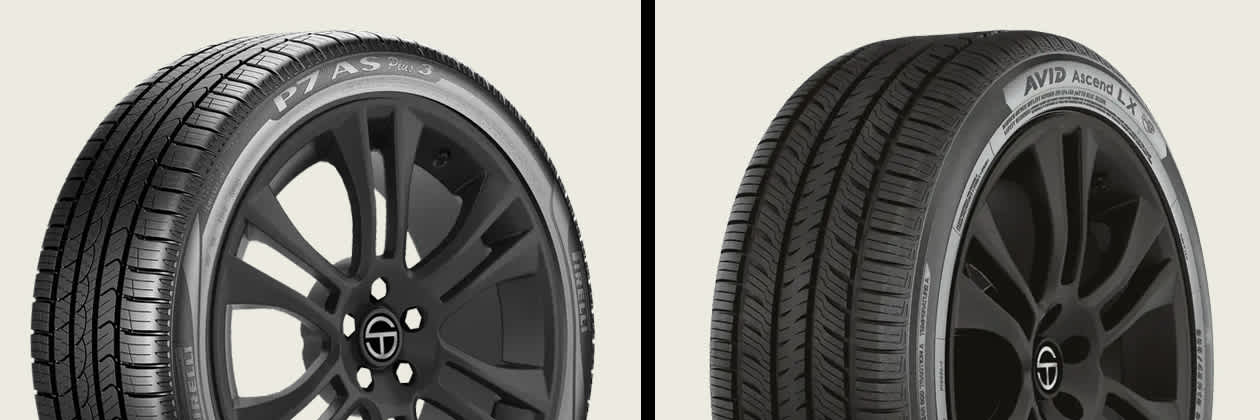Compare
Best price guarantee
Free tire replacement coverage
24/7 roadside assistance
Easy returns

For most drivers of sedans, minivans, coupes, CUVs, and SUVs, premium all-season tires make the most sense for several reasons. All-season tires act as a Swiss Army Knife kind of solution for year-round driving, ensuring dependable traction on all surfaces but heavy snow, quiet and controlled rides, good response and road manners, capable handling, and generous treadwear warranties. The reasons mentioned here are responsible for enabling all-season tires to dominate the tire market year in and year out as the single largest-selling tire category.
Among the many premium all-season options in the US market, we’re going to take a closer look at the Pirelli P7 All Season Plus 3 and Yokohama Avid Ascend LX, both of which are tremendous performers in their own right. Pirelli and Yokohama are two of the world's best-recognized tire brands, so you can be sure their products will also be of high quality. Pirelli offers buyers a new compound, construction, and high fuel efficiency with the P7 All Season Plus 3. Similarly, 2017 was the year when Yokohama celebrated its centennial, and Avid is one of the best daily-use touring and all-season tires manufactured since then.
During this product comparison, we’ll be frequently referring to SimpleScore numbers. To give you an insight, SimpleScore is the ranking system that our SimpleTire team developed for understanding tires as per their traction, longevity, and handling performance. We analyze reviews and other manufacturer data points to ascertain a numerical value of 1-10 for the above parameters and also come up with an overall average SimpleScore for each. Our SimpleScores for the above Pirelli and Yokohama tires are as follows:
Pirelli P7 All Season Plus 3:
- Traction: 9.5
- Handling: 9.3
- Longevity: 9.5
- Overall average SimpleScore: 9.3
Yokohama Avid Ascend LX:
- Traction: 8.4
- Handling: 8.7
- Longevity: 9.8
- Overall average SimpleScore: 8.9
Both tires have their own strengths and weaknesses but are not quite the same as each other. Although SimpleScore is a handy at-a-glance tool, it doesn’t exactly give a comprehensive, detailed idea of what to expect with a tire. Let’s take a closer look at this P7 All-Seasons Plus 3 vs Avid Ascend LX comparison to know which tire better aligns with your driving needs.
Pirelli P7 All-Season Plus 3 tires

Pirelli tires have traditionally been known as the ones that handle very well in motorsports events, but they also strive to stay ahead of the game on tarred roads through modern features and benefits on its all-season tires. Pirelli P7 All-Season Plus 3 is designed for low noise, enhanced ride comfort, lower noise, and consistent traction even in light winter conditions.
Longevity and traction are boosted through the Italian manufacturer’s new and functionalized polymer tread compound. Along with longer wear, there is better dry and wet traction due to an asymmetric tread pattern.
An innovative design here makes use of 3D technology in the tread pattern for better rubber-to-road contact that leads to enhanced traction and stability for the entire year. Larger, sequence-tuned tread blocks cancel road noise for a quiet ride while also improving dry-weather handling. The P7 All-Season Plus 3’s tread grooves and channels are equally distributed across wet pavements and work in unison to eliminate water from the tire’s contact patch for safety against hydroplaning tendencies.
The 3D and full-depth sipes in horizontal, vertical, and zigzag patterns provide hundreds of extra biting edges for consistent traction in slush, snow, and rain. You can be assured of high durability and a stable, secure driving experience due to a 2-ply polyester casing, twin steel belts, and two polyamide cap plies. Enjoy peace of mind from Pirelli’s 70,000 mile limited manufacturer treadwear warranty for the P7 All-Season Plus 3. This tire is good enough for an excellent average SimpleScore of 9.3.
Yokohama Avid Ascend LX tires

With exceptional traction and mileage, the Yokohama Avid Ascend LX is a premium touring all-season tire designed to give passenger vehicles, CUVs, SUVs, and minivans long-term reliability and ensures a peaceful ride. The Avid Ascend LX acts as a durable all-season tire with great handling and traction throughout the year. Four broad grooves that drain slush and water from the tread are responsible for great wet grip and braking performance, reducing hydroplaning chances. The larger contact patch's special rubber compound prolongs tire life and reduces uneven wear for better overall performance. The Avid Ascend LX also guarantees a comfortable and smooth ride thanks to its multi-pitch design and a tremendous limited manufacturer tread life warranty of up to 85,000 miles.
Based on the above, The Avid Ascend LX earns an overall average SimpleScore of 8.9.
Pirelli P7 All-Season Plus 3 vs Yokohama Avid Ascend LX tires on traction
How do the Pirelli P7 All-Season Plus 3 and Yokohama Avid Ascend LX weigh up against each other in the traction category? Apart from a brand-new tread compound, the 3D sipes on the Pirelli’s shoulders do a great job of enhancing dry, wet, and light winter traction. This tire feels equally confident on wet pavements, demonstrating very little tendency toward hydroplaning. Additionally, an asymmetrical tread pattern is also helpful in improving grip and the tire receives an amazing average traction SimpleScore of 9.5.
Compared to the above, there’s an advanced L-2 compound on the Yokohama Avid Ascend LX that has been specially engineered for a confident wet grip. Wavy 3D sipes and notches in the intermediate ribs are responsible for enhancing extra grip on winter roads, leading to better traction on light snow. Wide circumferential and lateral grooves remove water from the tread, thereby reducing the risks due to hydroplaning and increasing wet traction. Based on the above, the Avid Ascend LX is good enough for an average traction SimpleScore of 8.4.
ADVANTAGE: Pirelli P7 All-Season Plus 3
Pirelli P7 All-Season Plus 3 vs Yokohama Avid Ascend LX tires on handling

The Pirelli and the Yokohama are separated by a fair margin in the handling category, though less than what was observed in traction. Even Pirelli's all-season tires such as the P7 All-Season Plus 3 are often influenced by Pirelli's vast experience in the motorsports industry. With stronger shoulder blocks that aid in cornering, the sipes that improve grip also affect handling and maneuverability. Furthermore, the P7 All-Season Plus 3's sturdy center rib improves straight-line driving manners and responsiveness. For drivers who prefer to push the boundaries, the P7 All-Season Plus 3 is quite capable, even though it may not have the handling of a summer or UHP tire. We found the P7 All-Season Plus 3 suitable enough for an awesome handling score of 9.3.
Yokohama Avid Ascend LX gets a combination of four wide grooves and lateral grooves within the tread to enhance braking performance. The advanced L2 tread compound contributes towards better handling. A symmetric tread pattern is in place here and the steering response is predictable and precise, resulting in a great handling score of 8.7.
ADVANTAGE: Pirelli P7 All-Season Plus 3
Pirelli P7 All-Season Plus 3 vs Yokohama Avid Ascend LX tires on longevity
The comparison gets a lot closer and the two tires stack up more evenly in the longevity category. Limited manufacturer treadwear warranty plays a major part in the longevity category, with it being a deal-breaker for many buyers. The Pirelli tire is backed by a tread life warranty of 70,000 miles. In comparison, the Yokohama gets a 85,000 mile tread life warranty for standard or the front of staggered fitments and a 42,500 mile tread life warranty for the rear of staggered fitments. Overall, the top limit for tread life warranty is higher for the Yokohama than the Pirelli.
Both tires sport new and sophisticated rubber compounds for long tread life, with the same being termed L2 on the Yokohama. While a flatter and broader contour profile ensures a larger footprint, decreases uneven wear, and boosts tread life, the multi-pitch tread design keeps the tire shape and compound consistent. There are full-depth and 3D sipes on the Pirelli for reducing irregular wear.
While the Pirelli scores 9.5, the Yokohama beats it with an outstanding 9.8.
ADVANTAGE: Yokohama Avid Ascend LX
When to use each
When it comes to choosing between premium tires from Pirelli and Goodyear, there are very few chances of going wrong with either one. For a wide range of sedans, crossovers, coupes, and minivans, both are great performers. However, you must have noticed that the Pirelli is significantly ahead of the Yokohama in most parameters. Remember that these tires are not meant for deeper snow as they do not feature the Three Peak Mountain Snowflake certification. That being said, the Pirelli compound has been enhanced for better grip in light snow.
Along with improved handling and a substantial treadwear warranty, the Pirelli is built for a smooth and opulent ride. In hindsight, both are great options for any driver who wants all-season performance but also prefers a responsive and agile tire to occasionally push the performance envelope. Pirelli may have a better presence in the motorsports world through F1 and superbikes, but even Yokohama tires participate in events such as Porsche Sprint Challenge North America and Porsche Pikes Peak Trophy.
Which one should you choose?

Both tires have been designed to meet similar performance targets with respect to ride quality, handling, noise level, year-round grip, treadwear, and steering response. Pirelli P7 All-Season Plus 3 comes on top across all parameters except longevity, and those too by big margins. It’s important to mention here that price is another factor that tips the scales here; the Pirelli P7 All-Season Plus 3 starts from $125.99 per tire ($503.96 for 4), as opposed to $114.99 per tire ($459.96 for 4) for the Yokohama.
Many of you may have thought that the Pirelli would be considerably more expensive than the Yokohama. However, do remember that prices differ between the two for different sizes. Still, the fact remains that the Yokohama is better for those on a smaller budget.
To summarise, you can consider the Pirelli P7 All-Season Plus 3 if:
- You drive vehicles such as Acura RSX or Lexus IS300
- You are keen on better traction
- You are looking for better handling
- You have greater faith in the Pirelli brand
On the other hand, the Yokohama Avid Ascend LX would be a good idea if you:
- Drive vehicles like the Kia Rio or a minivan like the Chevrolet City Express
- Are looking for an affordable tire with excellent performance
- Prefer a tire with a longer mileage warranty
- Want excellent longevity (9.7 vs 8.6)
Still not sure which tire to buy? Fortunately, SimpleTire is here to help as our helpful agents will be more than happy to assist you in selecting the right tire for your ride and budget.
Ready to find the perfect tires?
Search By